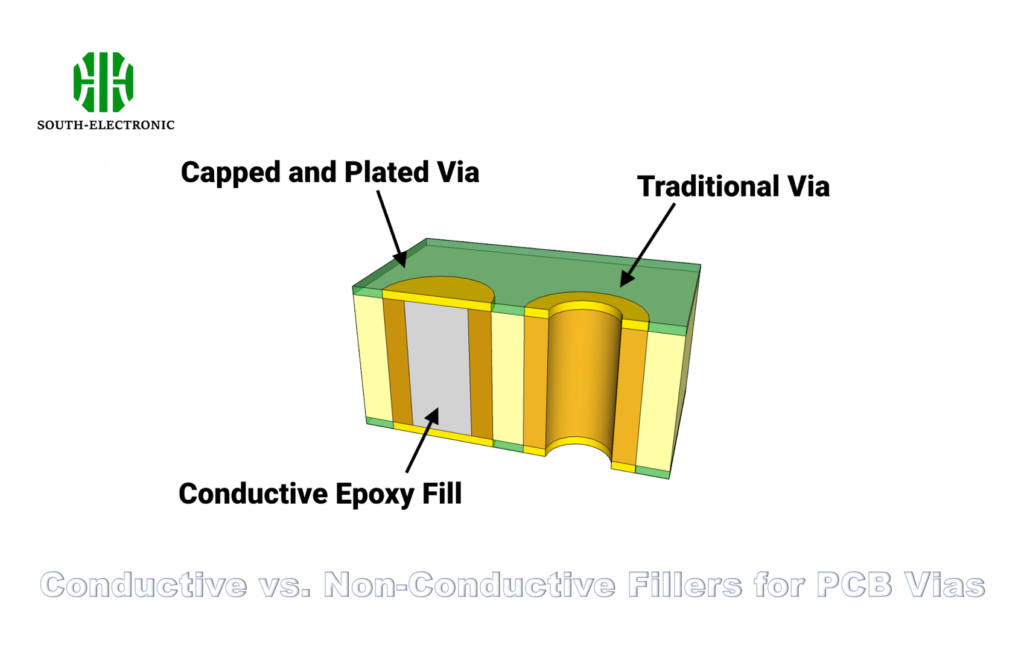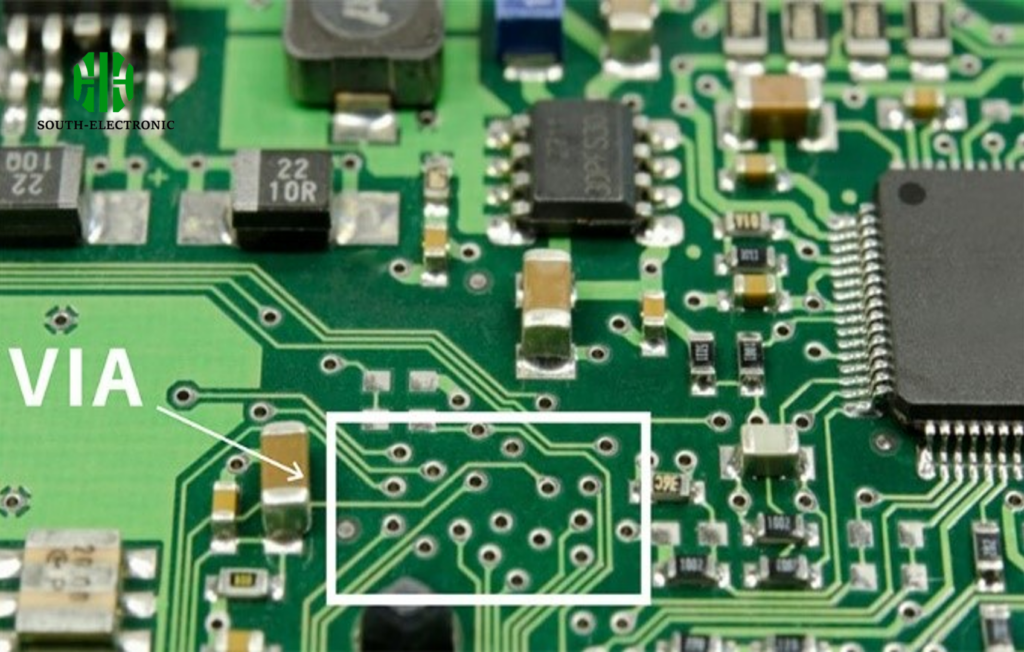Ever faced signal distortion or overheating in your PCB designs? These issues often trace back to improperly filled vias. The electroplating hole filling process solves this by creating seamless electrical pathways in multilayer boards.
PCB electroplating hole filling[^1] deposits conductive materials (like copper) into vias, eliminating air gaps that cause signal loss. This ensures reliable connections between layers while improving thermal management and structural integrity in high-speed circuits.
Understanding this process isn’t just about knowing plating techniques – it’s about solving real-world design challenges. Let’s break down the key questions engineers ask when implementing hole filling in their PCB projects.
Why Does PCB Electroplating Hole Filling Prevent Signal Loss in High-Speed Circuits?
Signal integrity nightmares plague modern electronics. I once watched a 5G prototype fail because of unfilled vias acting like tiny antennas. Filled vias prevent this by creating consistent impedance paths.
Hole filling eliminates air pockets in vias that cause impedance mismatches. Smooth copper-plated walls maintain signal integrity[^2] by preventing reflections and crosstalk in high-frequency applications (above 1 GHz).
)
Three Critical Factors in Signal Preservation
-
Material Conductivity
Copper’s high conductivity (5.96×10⁷ S/m) ensures minimal signal attenuation -
Surface Smoothness
Electroplating creates mirror-like via walls reducing skin effect losses -
Void Elimination
Complete filling prevents parasitic capacitance between layers
| Via Type | Signal Loss at 10GHz | Impedance Variation |
|---|---|---|
| Unfilled | -3.2 dB | ±15% |
| Filled | -0.8 dB | ±5% |
This table shows why leading manufacturers insist on void-free copper filling[^3] for RF designs. The plated copper’s continuous structure acts like a waveguide for high-speed signals.
How to Choose Between Conductive vs. Non-Conductive Fillers for PCB Vias?
I’ve seen teams waste months testing wrong fillers. The choice impacts everything from cost to thermal performance[^4]. Last year, a client’s IoT device failed because they used silver epoxy in high-humidity environments.
Conductive fillers[^5] (copper, silver) suit high-frequency/power applications. Non-conductive options[^6] (epoxy, resin) work for basic interconnects. Consider electrical needs, thermal requirements, and budget when choosing.
)
Decision Matrix for Material Selection
1. Electrical Needs
- Conductive: >5 GHz signals/power vias
- Non-conductive: Digital <1 GHz
2. Thermal Requirements
- Conductive: 200+ W/mK for power boards
- Non-conductive: <1 W/mK acceptable
3. Cost Factors
- Conductive fillers cost 3-5× more
| Property | Conductive Fillers | Non-Conductive Fillers |
|---|---|---|
| Conductivity | 10⁶ S/m | 10⁻¹² S/m |
| Thermal Transfer | 200-400 W/mK | 0.2-0.5 W/mK |
| Relative Cost | $$$$ | $ |
| Best Application | RF/Power | Consumer Electronics |
Always cross-check filler CTE with board materials to avoid thermal stress cracks during operation.
What Are the Common Defects in Hole Filling Process and How to Fix Them?
A production batch once had 40% defective vias. Microscopic voids caused intermittent failures that took weeks to diagnose. Recognizing common defects early saves costly rework.
Key defects include plating voids (35% occur at via base), uneven copper distribution, and filler cracks. Solutions involve optimized current density, pulse plating, and post-plating annealing.
)
Defect Troubleshooting Guide
1. Voids/Cavities
- Cause: Insufficient agitation
- Fix: Use vacuum-assisted plating
2. Thin Copper
- Cause: Low current density
- Fix: Increase to 20-30 mA/cm²
3. Dendritic Growth
- Cause: Contaminated bath
- Fix: Replace plating solution
4. Filler Cracks
- Cause: CTE mismatch
- Fix: Use nano-modified epoxy
Implementing statistical process control[^7] (SPC) reduces defect rates from 15% to <2% in production lines. X-ray inspection helps catch subsurface issues before final assembly.
How Does Hole Filling Improve Thermal Management in Multilayer PCBs?
Power-hungry processors demand smarter heat solutions. I recently worked on a server board where filled vias reduced junction temps by 18°C compared to traditional designs.
Filled vias create vertical thermal pathways, conducting heat from ICs to heatsinks 400% faster than air. Copper-plated vias achieve 380 W/mK thermal conductivity versus 0.024 W/mK for air.
)
Multilayer Thermal Strategy
-
Conductive Fillers
Copper-plated vias under hot components -
Via Arrays
15-20 vias per cm² for high-power areas -
Interlayer Bonding
Filled vias improve adhesion between prepreg layers
| Cooling Method | Thermal Resistance | Cost Impact |
|---|---|---|
| Unfilled Vias | 25°C/W | – |
| Copper-Filled Vias | 6°C/W | +15% |
| Embedded Heat Pipes | 3°C/W | +40% |
Combining filled vias with thermal planes creates affordable cooling solutions for 200W+ boards. Always simulate thermal profiles before finalizing via patterns.
Conclusion
Proper PCB hole filling eliminates signal loss while boosting thermal performance. Choosing right materials and process controls ensures reliable, high-density circuit boards for advanced electronics. Implement these solutions to avoid costly redesigns and failures.
[^1]: Explore this link to understand the PCB electroplating hole filling process and its significance in enhancing signal integrity and thermal management.
[^2]: Learn about signal integrity and its critical role in high-speed PCB designs to ensure reliable performance in modern electronics.
[^3]: Discover the advantages of void-free copper filling in PCB manufacturing and how it enhances performance in RF designs.
[^4]: Understanding thermal performance is crucial for PCB reliability; this link provides insights into managing heat in your designs effectively.
[^5]: Explore this link to understand how conductive fillers can enhance your PCB's performance, especially in high-frequency applications.
[^6]: This resource will help you determine the best scenarios for using non-conductive fillers, ensuring optimal performance and cost-effectiveness.
[^7]: Exploring SPC can help you implement effective quality control measures, significantly lowering defect rates in production.



